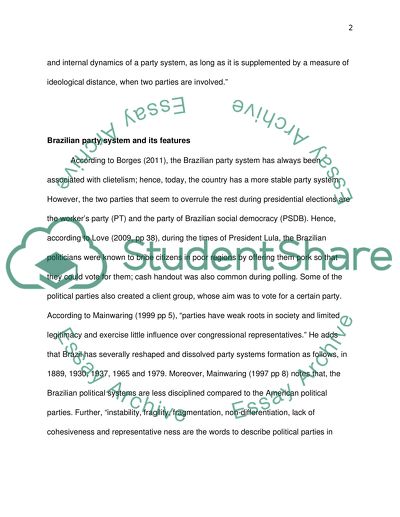Cite this document
(“Brazilian Worker's Party System Essay Example | Topics and Well Written Essays - 1000 words”, n.d.)
Retrieved from https://studentshare.org/politics/1416669-brazilian-worker-s-party-system
Retrieved from https://studentshare.org/politics/1416669-brazilian-worker-s-party-system
(Brazilian Worker'S Party System Essay Example | Topics and Well Written Essays - 1000 Words)
https://studentshare.org/politics/1416669-brazilian-worker-s-party-system.
https://studentshare.org/politics/1416669-brazilian-worker-s-party-system.
“Brazilian Worker'S Party System Essay Example | Topics and Well Written Essays - 1000 Words”, n.d. https://studentshare.org/politics/1416669-brazilian-worker-s-party-system.


